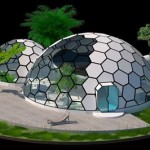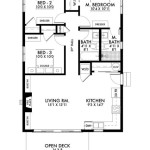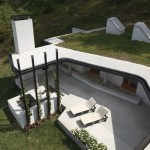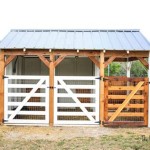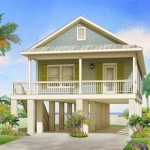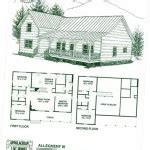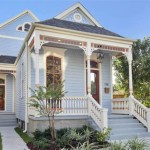House Plans With Breezeway: Seamless Indoor-Outdoor Living
The integration of indoor and outdoor living spaces has become an increasingly sought-after architectural feature in modern home design. House plans incorporating a breezeway offer a unique and effective approach to achieving this seamless transition. A breezeway is a covered passageway, typically open on the sides, connecting two distinct parts of a house. Its function extends beyond mere connection; it serves as a transitional zone that blurs the boundaries between the interior and exterior environments, enhancing both the functionality and aesthetic appeal of the home.
Historically, breezeways served practical purposes, particularly in warmer climates. They facilitated airflow, providing natural ventilation and cooling, thus reducing the reliance on artificial cooling systems. In the context of contemporary architecture, while the practical benefits remain relevant, the breezeway has evolved to become a significant design element. It contributes to the overall spatial experience, offering a versatile area that can be adapted to various lifestyle needs.
The design of a house plan with a breezeway involves careful consideration of several factors, including the site's climate, orientation, and topography. The architectural style of the house also plays a crucial role in determining the breezeway's form and function. Whether the overall design is modern, traditional, or eclectic, the breezeway should harmonize with the architectural vocabulary of the house while simultaneously enhancing its connection to the surrounding landscape.
The orientation of the breezeway in relation to the sun and prevailing winds is critical for maximizing its functionality. For example, in warmer climates, aligning the breezeway with the prevailing winds can promote natural ventilation. Conversely, in colder climates, measures may be taken to mitigate the effects of harsh weather, such as incorporating adjustable screens or windbreaks. The material palette used in the breezeway's construction further contributes to its overall aesthetic and performance. Durable, weather-resistant materials such as stone, wood, and concrete are commonly employed, often in conjunction with landscaping elements to further integrate the space with the outdoors.
Enhanced Natural Ventilation and Cooling
One of the primary advantages of a breezeway is its ability to facilitate natural ventilation. By acting as a conduit for airflow, the breezeway helps to regulate the temperature within the house, reducing the need for air conditioning. This is particularly beneficial in warmer climates, where minimizing energy consumption is a key consideration. The effectiveness of the breezeway in promoting natural ventilation depends on several factors, including its orientation, size, and shape.
A well-designed breezeway should be positioned to capture prevailing winds and direct them through the house. This can be achieved by aligning the breezeway with the wind's path and ensuring that there are openings on both sides to allow for cross-ventilation. The size and shape of the breezeway also influence its ability to promote airflow. A wider breezeway will generally allow for greater airflow, while a taller breezeway may create a stack effect, drawing warm air upwards and out of the house.
The materials used in the construction of the breezeway can also contribute to its cooling effect. Utilizing materials with high thermal mass, such as concrete or stone, can help to absorb heat during the day and release it at night, moderating the temperature fluctuations within the house. The addition of vegetation, such as climbing vines or potted plants, can further enhance the cooling effect by providing shade and evaporative cooling. Furthermore, strategic landscaping around the breezeway can create microclimates that further enhance the cooling effect.
Furthermore, the integration of operable windows and doors along the interior walls of the breezeway can maximize cross-ventilation throughout the entire house. This allows homeowners to control the amount of airflow entering the house and adjust it according to their preferences. The careful selection of window and door types, considering factors such as solar heat gain coefficient and air leakage, can further optimize the energy performance of the house.
Versatile Transition Space and Functional Extension of Living Areas
Beyond its ventilative capabilities, the breezeway serves as a versatile transition space, seamlessly connecting different parts of the house while blurring the distinction between indoor and outdoor environments. This transitional nature allows for a variety of functional uses, extending the living areas of the house and providing opportunities for diverse activities.
A breezeway can function as an outdoor living room, providing a sheltered space for relaxation and entertainment. Comfortable seating, outdoor fireplaces, and integrated lighting can transform the breezeway into a welcoming gathering place for family and friends. The open sides allow for unobstructed views of the surrounding landscape, creating a connection with nature that enhances the overall ambiance of the space.
Alternatively, the breezeway can be utilized as a covered walkway, providing protection from the elements while moving between different parts of the house. This is particularly useful in areas with inclement weather, where it can provide a safe and comfortable passage between the main house and a detached garage, studio, or guest house. The covered nature of the breezeway also makes it an ideal location for storing outdoor equipment, such as bicycles, gardening tools, or firewood.
In some house plans, the breezeway is designed to incorporate a dedicated outdoor kitchen or dining area. This setup allows for seamless indoor-outdoor entertaining, with easy access to cooking and dining facilities. The breezeway's sheltered environment provides protection from the sun and rain, allowing for year-round enjoyment of outdoor activities. The integration of built-in barbecues, countertops, and sinks can further enhance the functionality of this outdoor kitchen area.
Moreover, the breezeway can serve as a mudroom or entry foyer, providing a dedicated space for removing shoes and coats before entering the main living areas of the house. This is particularly useful in areas with muddy or snowy conditions, where it can help to keep the interior of the house clean and tidy. The addition of storage cabinets, benches, and coat racks can further enhance the functionality of this entry area.
Enhanced Aesthetic Appeal and Connection to Nature
The inclusion of a breezeway in a house plan significantly enhances its aesthetic appeal, creating a visual connection between the built environment and the natural landscape. The breezeway acts as a mediating space, blurring the boundaries between the interior and exterior, and fostering a sense of harmony between the house and its surroundings. This connection to nature can have a profound impact on the overall well-being of the occupants, promoting relaxation, reducing stress, and enhancing creativity.
The design of the breezeway should complement the architectural style of the house and reflect the surrounding landscape. The use of natural materials, such as wood, stone, and bamboo, can further enhance the connection to nature. The incorporation of landscaping elements, such as trees, shrubs, and flowers, can create a lush and inviting environment, blurring the lines between the built and natural environments.
The breezeway can also serve as a focal point for the house, drawing the eye and creating a sense of visual interest. The careful use of lighting, both natural and artificial, can further enhance the breezeway's aesthetic appeal. Strategically placed lighting fixtures can highlight architectural features, illuminate pathways, and create a warm and inviting ambiance. The integration of water features, such as fountains or ponds, can add a soothing and tranquil element to the breezeway.
Furthermore, the breezeway can be designed to frame views of the surrounding landscape, creating a sense of immersion in nature. The placement of windows and doors should be carefully considered to maximize views of gardens, forests, or bodies of water. The use of large expanses of glass can further enhance the connection to the outdoors, allowing natural light to flood the interior of the house.
In conclusion, the inclusion of a breezeway in a house plan offers numerous benefits, from enhanced natural ventilation and cooling to versatile transition space and enhanced aesthetic appeal. The design of a breezeway requires careful consideration of several factors, including the site's climate, orientation, and topography, as well as the architectural style of the house. When properly designed, the breezeway can transform a house into a seamless and harmonious living environment.

Single Story House Plans With Breezeways To Guest Houses Blog Eplans Com

Single Story House Plans With Breezeways To Guest Houses Blog Eplans Com

Barndominium Floor Plans With Breezeway 8 Creative Designs For Medium And Large Families

Log Home Luxury Introducing A 5 Bedroom With Breezeway To An In Law Suite Floor Plan

Barndominium Floor Plans With Breezeway 8 Creative Designs For Medium And Large Families

How To Seamlessly Transition Between Your Indoor Outdoor Living Spaces

Single Story House Plans With Breezeways To Guest Houses Blog Eplans Com

Barndominium Floor Plans With Breezeway 8 Creative Designs For Medium And Large Families

Top 30 Luxury House Plans Of All Sizes Houseplans Blog Com

Ranch House Plans Style Home Designs The Designers
Related Posts

